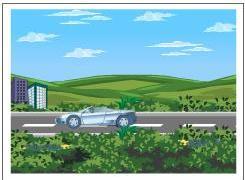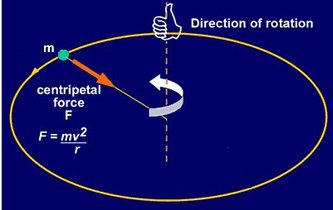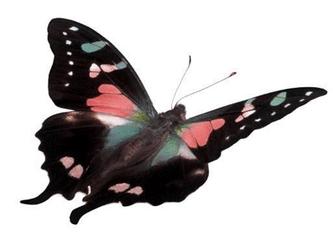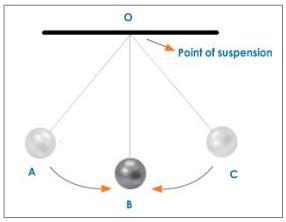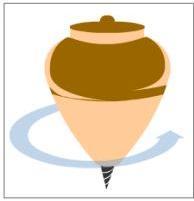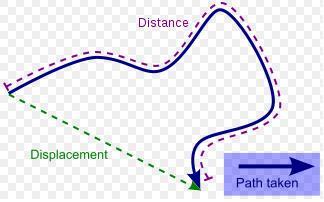Study Of Physics
CH.3 Kinematics
Mechanics, the oldest physical science, is the study of motion of objects. It is applied in calculation of the path of an artillery shell, a space probe sent from earth to Mars, etc.
Everything in the universe is in motion, from the tiny electrons to the giant galaxies.
The study of motion can be broadly classified into two categories.
Kinematics
It deals with the path of a moving body. This branch is only concerned with describing motion (with the help of mathematics) and not with the cause of motion.
Dynamics
This is derived from the Greek word 'dynamis', meaning power. Dynamics involves the study of the cause of motion, which is force. When we relate motion of an object to the forces associated with it and to the properties of the moving objects, we are dealing with dynamics.
In this chapter, however, we shall define some kinematical quantities and study them for the case of motion in one, two and briefly in three dimensions. Statics is the branch of mechanics that deals with the study of motion of objects under the effect of forces in equilibrium.
Everything in the universe is in motion, from the tiny electrons to the giant galaxies.
The study of motion can be broadly classified into two categories.
Kinematics
It deals with the path of a moving body. This branch is only concerned with describing motion (with the help of mathematics) and not with the cause of motion.
Dynamics
This is derived from the Greek word 'dynamis', meaning power. Dynamics involves the study of the cause of motion, which is force. When we relate motion of an object to the forces associated with it and to the properties of the moving objects, we are dealing with dynamics.
In this chapter, however, we shall define some kinematical quantities and study them for the case of motion in one, two and briefly in three dimensions. Statics is the branch of mechanics that deals with the study of motion of objects under the effect of forces in equilibrium.
Kinematics is the science of describing the motion of objects using words, diagrams, numbers, graphs, and equations. Kinematics is a branch of mechanics. The goal of any study of kinematics is to develop sophisticated mental models which serve to describe (and ultimately, explain) the motion of real-world objects. In this lesson, we will investigate the words used to describe the motion of objects. That is, we will focus on the language of kinematics. The hope is to gain a comfortable foundation with the the language which is used throughout the study of mechanics. The words listed below are used with regularity to describe the motion of objects. Your goal should be to become very familiar with their meaning.
Our study of physics begins with the concepts of mechanics: the study of motion. We will first be concerned with kinematics, or how we describe motion. From there we will move on to the causes of motion.Finally, we will apply the tools we have learned to some physiological systems.and the . The concepts in this chapter will be used throughout the rest of the course, for they are the basis for our descriptions of motion, and what is physics if not the study of moving systems?
Our study of physics begins with the concepts of mechanics: the study of motion. We will first be concerned with kinematics, or how we describe motion. From there we will move on to the causes of motion.Finally, we will apply the tools we have learned to some physiological systems.and the . The concepts in this chapter will be used throughout the rest of the course, for they are the basis for our descriptions of motion, and what is physics if not the study of moving systems?
Ch.03: Kinematics 3.1 :- Rest and Motion
3.2 :- Different Types of Motion
3.3 :- Position
3.4 :- Distance and Displacement
3.5 :- Speed and Velocity
3.6 :- Relative Velocity
3.7 :- Acceleration
3.8:- Explanation of Velocity and
Acceleration with Graph
3.9:- Equations of Motion
3.10 :- Motion Under Gravity
3.11:- Value of 'g' by Free Fall
3.2 :- Different Types of Motion
3.3 :- Position
3.4 :- Distance and Displacement
3.5 :- Speed and Velocity
3.6 :- Relative Velocity
3.7 :- Acceleration
3.8:- Explanation of Velocity and
Acceleration with Graph
3.9:- Equations of Motion
3.10 :- Motion Under Gravity
3.11:- Value of 'g' by Free Fall
Ch.04: Motion And Force Ch.05: Vectors
Ch.06: Equilibrium
Ch.07: Circular Motion and Gravition
Ch.08: Work,Power And Energy
Ch.09: Simple Machines
Ch.10: Properties of Matter
Ch.11: Heat
Ch.06: Equilibrium
Ch.07: Circular Motion and Gravition
Ch.08: Work,Power And Energy
Ch.09: Simple Machines
Ch.10: Properties of Matter
Ch.11: Heat

